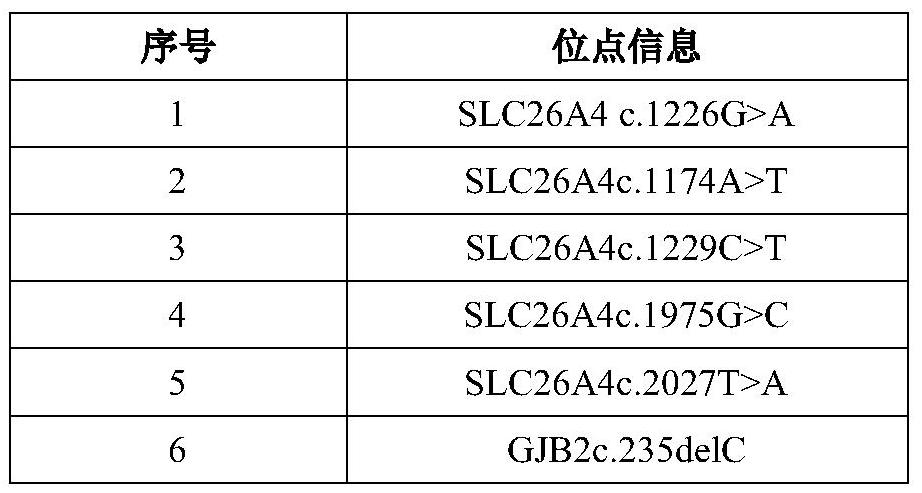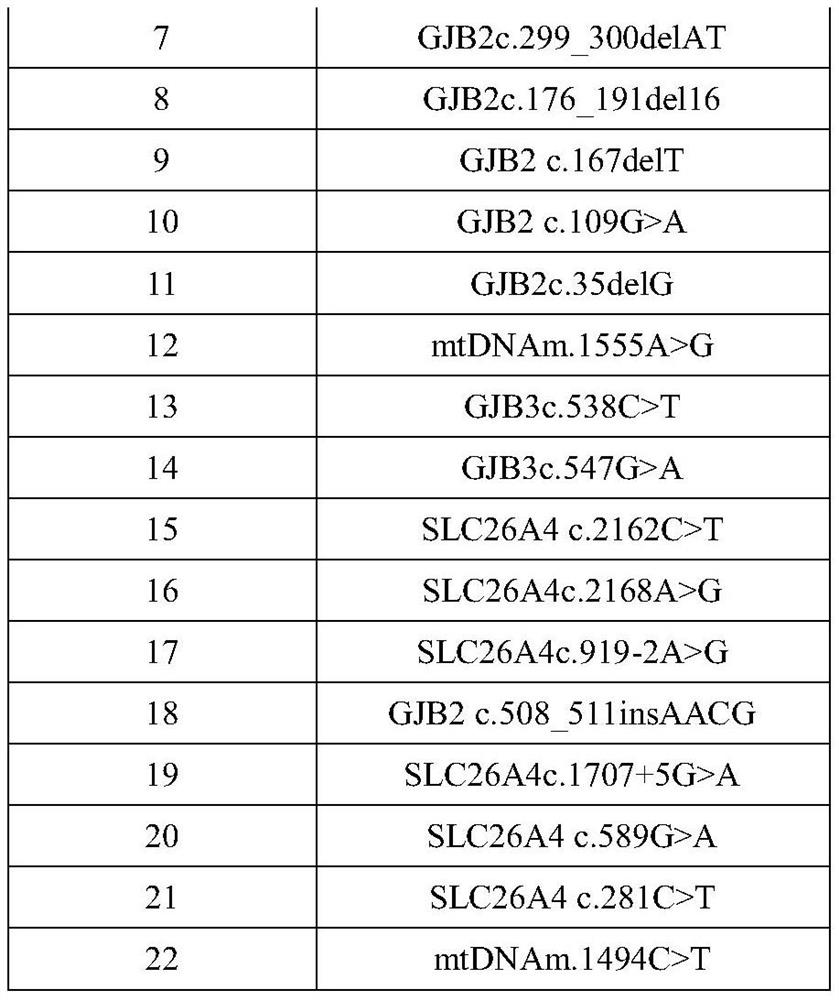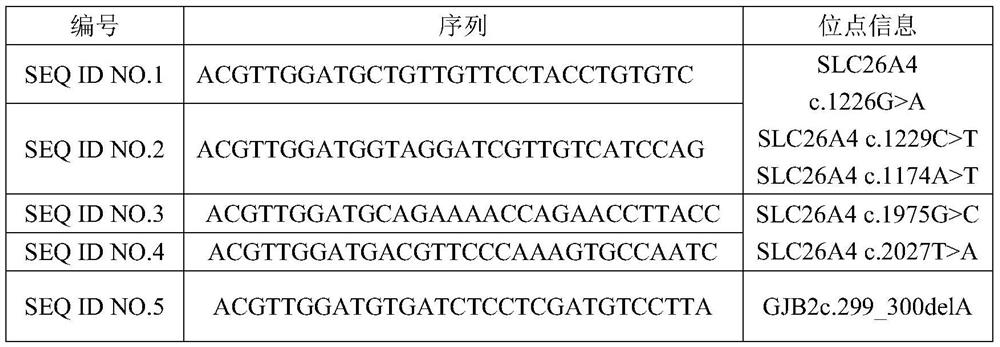A genetic testing product for hereditary deafness
A technology for hereditary deafness and genetic detection, applied in the field of biomedicine, can solve the problems of high cost, inability to detect, and time-consuming
- Summary
- Abstract
- Description
- Claims
- Application Information
AI Technical Summary
Problems solved by technology
Method used
Image
Examples
Embodiment 1
[0072] The verification of embodiment 1 detection method
[0073] 1. Determination of polymorphic sites
[0074] The polymorphic sites selected by the present invention all have high polymorphic information content, including the hotspot mutation sites of the deafness gene in the Chinese population, which greatly improves the haplotype diversity as a whole. Through large-scale sequencing screening, as well as the polymorphism survey and literature research of the deafness-causing genes reported in the prior art in the Chinese population, the 20 sites selected in the present invention are shown in Table 1, and the 22 sites are shown in Table 1. 2.
[0075] Table 1 All 20 polymorphic sites involved in the present invention
[0076] serial number Site information 1 SLC26A4c.1226G>A 2 SLC26A4c.1174A>T 3 SLC26A4c.1229C>T 4 SLC26A4c.1975G>C 5 SLC26A4c.2027T>A 6 GJB2c.235delC 7 GJB2c.299_300delAT 8 GJB2c.176_191del16 9 ...
Embodiment 2
[0131] Embodiment 2 carries out large sample verification to the selected SNP locus
[0132] 1. Collection of samples
[0133] According to the method in Example 1, 50 samples of hereditary deafness patients were collected, and the collection and application of the samples all obtained the informed consent of the patients.
[0134] 2. Sample detection
[0135] Using the method adopted in step 3 in Example 1, 20 sites listed in Table 1 and 20 SNP sites 235delC, 176_191del, 299_300delAT, 35delG, 167delT, 547G>A, 538C>T reported in the literature , 1229C>T, 1174A>T, 1226G>A, IVS15+5G>A, 2027T>A, 1975G>C, 589G>A, 2162C>T, 281C>T, IVS7-2A>G, 2168A>G, 1555A >G and 1494C>T for site detection.
[0136] 3. Results
[0137] The detection results of 20 different SNP sites showed that there were 39 deaf patients who detected the SNP sites listed in Table 1, and the comprehensive detection rate was 78%; the 20 SNP sites reported in the comparative literature were detected There are 35...
Embodiment 3
[0138] Embodiment 3 A kind of hereditary deafness gene detection kit
[0139] According to the correlation between SNP sites and hereditary deafness, the present invention provides a kit for diagnosing deafness based on the genotype of SNP sites. The components of the kit include multiplex PCR reaction system, SAP enzyme treatment system, single alkali Base extension reaction system, DNA extraction reagent, negative quality control, positive quality control, purification resin, mass spectrometry detection chip, instruction manual or label. Multiplex PCR system includes PCR amplification primers, PCR buffer, 25mM dNTPs, 25mM MgCl 2 , 5U / μl PCR enzyme, PCR amplification primer sequence as shown in SEQ ID NO.1-22; SAP enzyme treatment system includes SAP buffer, SAP enzyme; single base extension reaction system includes single base extension primer, iPLEX buffer , iPLEX termination mixture, iPLEX enzyme, single base extension primer sequence as shown in SEQ ID NO.27-46; DNA extr...
PUM
 Login to View More
Login to View More Abstract
Description
Claims
Application Information
 Login to View More
Login to View More - R&D
- Intellectual Property
- Life Sciences
- Materials
- Tech Scout
- Unparalleled Data Quality
- Higher Quality Content
- 60% Fewer Hallucinations
Browse by: Latest US Patents, China's latest patents, Technical Efficacy Thesaurus, Application Domain, Technology Topic, Popular Technical Reports.
© 2025 PatSnap. All rights reserved.Legal|Privacy policy|Modern Slavery Act Transparency Statement|Sitemap|About US| Contact US: help@patsnap.com



